
Corals are Cool and Crucial
Year 4 Lesson plan
Lesson Outline

Australian Curriculum v8.3
Includes: teacher guide, 9 classroom activities and 3 teacher presentations
All activities can be used already but the lesson outline is under review
Lesson plan sequence
There are three presentations with teacher notes available for this lesson series.
Each presentation suggests related activities.
You can download the presentations from our google drive.
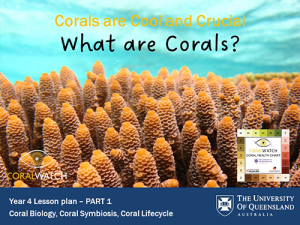
Presentation 1. What are Corals?
Coral Biology and coral lifecycle
Related activities:
Activity 1. Coral reef lifecycle game
Activity 2. Symbiosis game
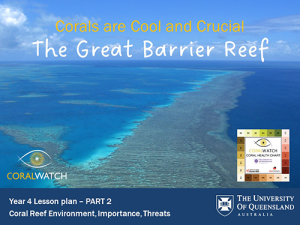
Presentation 2. The Great Barrier Reef
Coral reef environment, threats such as coral bleaching
Related activities:
Ozbot: Help the fish swim from the mangrove to the reef
Become a citizen scientist – Virtual reef
Virtual reality: Visit the reef and learn about citizen science.
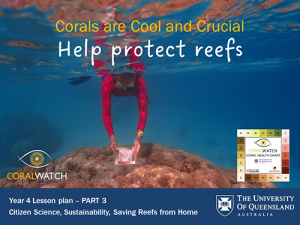
Presentation 3. Help protect reefs
Citizen science, saving reefs from home
Related activities:
Ozbot: Help the fish swim from the mangrove to the reef
Become a citizen scientists – Virtual reef
Virtual reality: Visit the reef and learn about citizen science.
Activity 1 – Coral Lifecycle
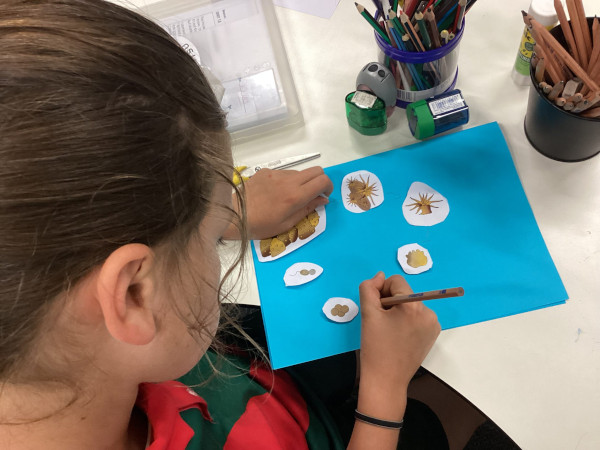
Students learn about 4 different stages in the coral lifecycle by cutting stages out and creating their own reef picture.
Download
Handout: Coral life stage icons, descriptions and headers (link Coral lifecycle icons and descriptions June 2023.pdf)
Background template: Coral life cycle diagram/background (link background for lifecycle.pdf)
Activity 2 – Symbiosis game
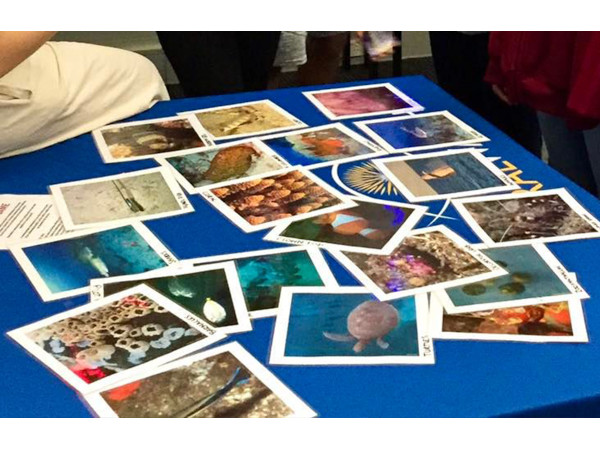
Corals live in symbiosis with a tiny plant called zooxanthellae. Learn about other interactions between two dissimilar organisms. The most common types of symbiosis found in the ocean are mutualism and commensalism.
Activity 3 – Ozbot
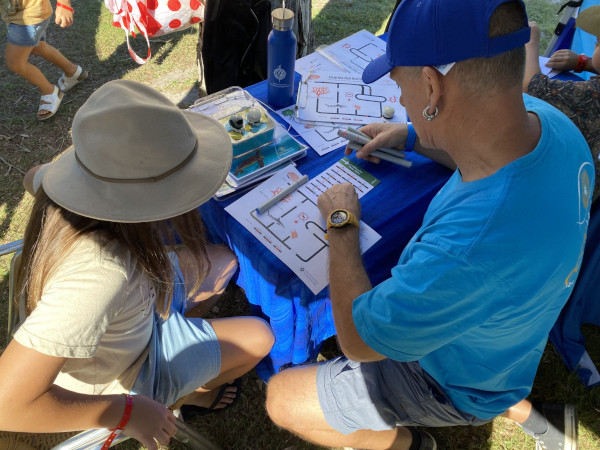
Ozobot presents a fun, easy way to get kids comfortable with robotics and programming. Ozbots use downward facing cameras to detect the color of the line and coloured blocks under it. Students use a sheet of codes and can draw designs on a piece of paper with colored markers. Help the little fish swim from the mangrove to the reef with the ozbot.
Download
Ozbot template track: Help the little fish swim from the mangrove to the reef.
Ozbot instructions
Activity 4 – Virtual Reality
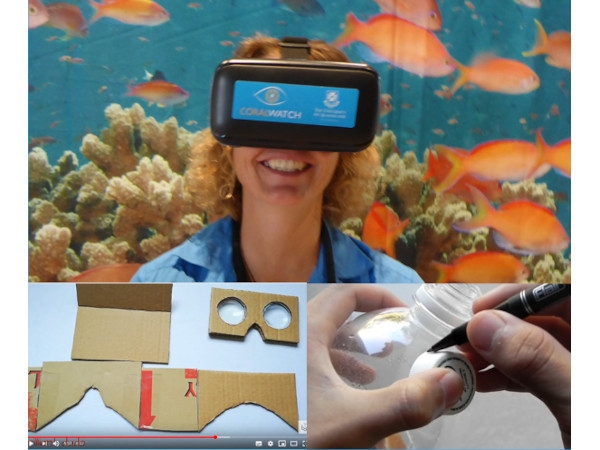
Immerse your students in the underwater world in class using virtual reality. Learn about CoralWatch monitoring, watching reefwalkers, snorkelers and divers using the Coral Health Chart on reefs at Lady Elliot Island and Northern Great Barrier Reef.
A fun activity combining science and art, you can create you own headsets if the real ones are not available to you.
Instructions
Download CoralWatch VR video content from YouTube
Create your own headset. Follow YouTube instructions
Create your own lenses. Follow YouTube instructions
Activity 5 – Become a citizen Scientist

You can bring the reef into the classroom using virtual tools such as virtual reefs and virtual reality
Instructions
- Read CoralWatch instructions on how to use the Coral Health Chart
- Watch CoralWatch Youtube instructional video
- To practice reef monitoring you can use:
- virtual reefs from CoralWatch
- coral photos
- Students match the coral colours on the pictures with the colours on the Coral Health Chart.
- Students record the colour scores and coral types on a data sheet
Just for this exercise you can print your own Coral Health Charts. ALWAYS use the original Coral Health Chart available from CoralWatch for monitoring corals in the field.
Activity 6 – Coral Reef Game
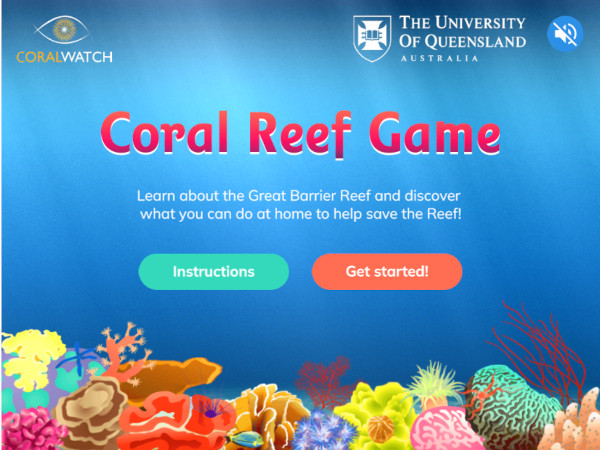
Learn about the Great Barrier Reef and discover what you can do at home to help save the reef! Students will score and receive a certificate corresponding to their results. Play the game
Activity 7 – Do’s and Don’t for the reef

There are many factors that determine whether a coral reef is healthy or unhealthy.
A healthy reef has high cover of colourful corals. Those corals appear in shades of olive green, brown, tan and pale yellow and there are lots of fish! There are not many threats such as Crown-of-Thorn starfish, sediment runoff, coral bleaching, pollution, storms present.
An unhealthy reef has low coral cover, corals might be covered with algae or are bleached. There are many threats to this reef.
You can run this activity in 2 different ways
- Download Template Do’s and don’t for the reef.pdf and ask students to draw and write an positive and negative message to help protect reefs.
- Download printouts for whiteboard Laminate thse sheets or print on magnetic paper. Cut out individual icons, draw a reef outline on a white board and build a healthy and an unhealthy reef.
Activity 8 – Art activity
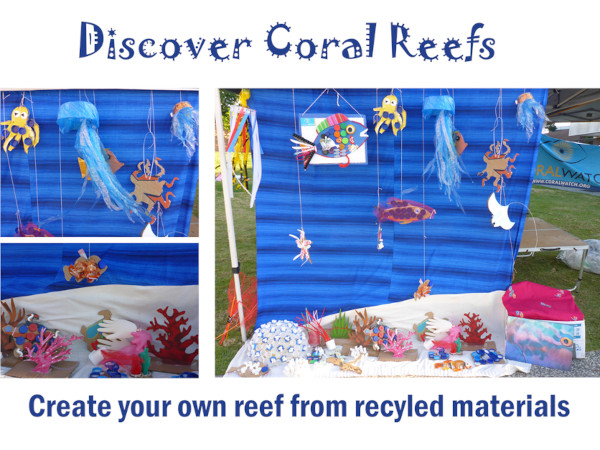
Create your own reef from recycled materials.
Instructions
Ask students to bring in recycled materials or organise a clean-up and collect them together.
Use cardboard for fish and coral shapes. You can paint them and decorate with plastic items, be creative and build a reef from all the individual items that the students create.
Create corals from clay – download instructions.
Activity 9 – Pledge
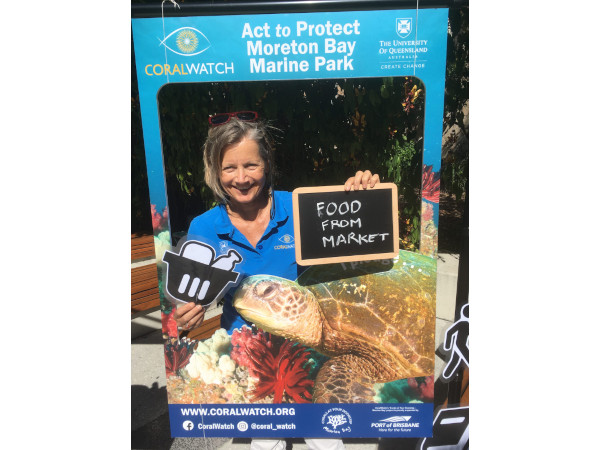
There are many things you can do at home to help save reefs.
Instructions
- Start with a brainstorm session what actions you can do to save reefs from home.
- Students decide individually what they want to do at home and write a pledge or be creative and create a pledge button from paper or recycled materials.
Download
Pledge example
CoralWatch GBR and What can I do factsheet
